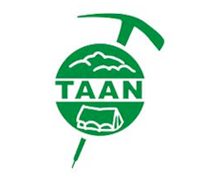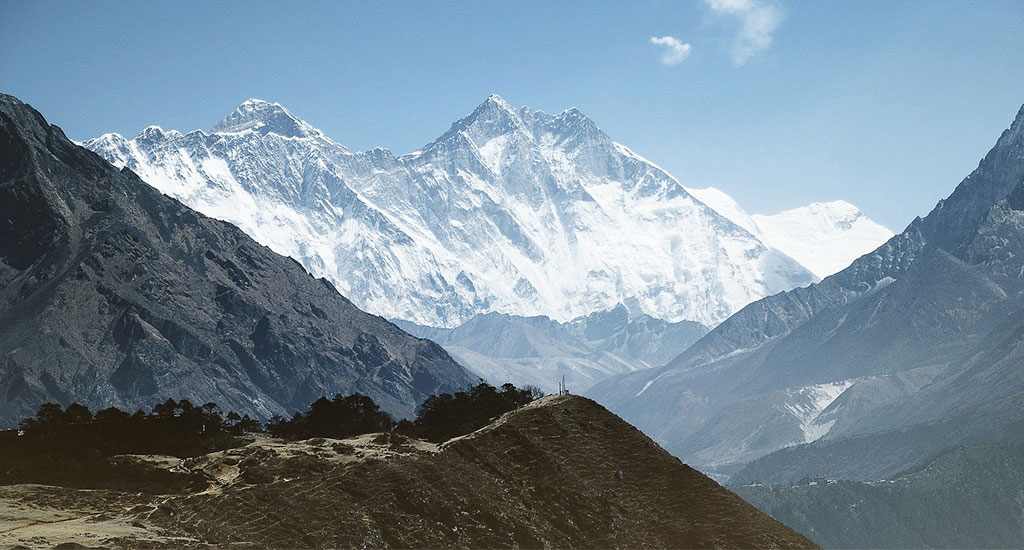Trip facts
Difficulty
Easy
Duration
16 Days
Activity
Trekking
Destination
Nepal
Max Altitude
3,864m
Trip Starts
Kathmandu
Trip Ends
Kathmandu
Difficulty
Easy
Duration
16 Days
Activity
Trekking
Destination
Nepal
Max Altitude
3,864m
Trip Starts
Kathmandu
Trip Ends
Kathmandu
Explore the Everest area amidst its calm serenity which reinforces its surroundings with the divine beauty of nature. The experience of this trek retroactively helps you release your demons as you hike down to its ever so peaceful monasteries; while simultaneously viewing some of the highest and most panoramic peaks on the planet.
This scenic trek through the river valley of the Dudh Kosi takes you through the traditional Sherpa villages of Namche, Khumjung and Khunde and brings you to the ever- so-quiet monasteries at Thyangboche and Pangboche. You will meet the friendly Sherpas and enjoy their world renowned hospitality. You will also be amazed to observe how life continues in this extremely quiet and spiritual side of the world; very much at its own pace as it has done for centuries.
Indeed, throughout this trek, you will have magnificent views of Mt Everest (8848m), Lhotse (8501m), Nuptse (7879m), Ama Dablam (6856m), Thamserku (6608m) and Kantega (6685m). You will also see great glaciers, sprawling snowfields and glistening ice ridges emitting sparkling flashes in the warm, Himalayan sun. You will experience some unique nature hikes through dark forests, open pastures and wade through masses of rhododendron flowers in the pre-monsoon, or the reds and gold ones of autumn in the post-monsoons. You will never have a better tryst with the gods of nature as you would on this trek.
It is a panoramic thrill flying into Kathmandu on a clear day. The views of snow-capped mountain peaks sprawling down below you are almost ecstatic, beginning a whole chain of memorable experiences that stay with you for a long, long time. A representative and driver from Yeti Holidays will meet you at the airport and escort you to your designated hotel. The representative will help you check into hotel. At the hotel you will be briefed about your daily activities.
Check In and Overnight at Hotel.
Meals: None.
After breakfast at the hotel, commence the sightseeing tour of Kathmandu city, Swayambhunath and Patan city.
KATHMANDU CITY: Kasthamandap, the source of the name Kathmandu means ‘made from the timber of a single tree’. Also known as Kantipur, the capital Kathmandu is the hub of Nepal's art and culture. It is a place for rest, relaxation and easy-day sightseeing of historic and artistic temples and monuments. Kathmandu Durbar Square with its arrays of temples, Seto Machhindranath and the ancient palace of the former Nepali Royals enriches your experience of the centuries old civilisation.
SWAYAMBHUNATH STUPA: Said to be around 2000 years old, this Buddhist Stupa sits atop a hill. The main stupa is composed of a solid hemisphere of brick and earth supporting a lofty conical spire crowned by a pinnacle of Copper gilt. Painted on the four sided base of the spire are the all seeing eyes of Lord Buddha. The hill of Swayambhunath is a mosaic of small Chaityas and Pagoda temples. You’ll get a scenic view of Kathmandu city from there.
PATAN CITY: Located about 5 km south of Kathmandu, Patan is one of 3 royal cities in the valley. A destination for connoisseurs of fine arts, Patan is filled with wood and stone carvings, metal statues, ornate architecture, including dozens of Buddhist and Hindu temples, and over 1200 monuments.
Patan is believed to have been built in the third century B.C. by the Kirat dynasty later expanded and enriched by the Licchavi and the Malla rulers in the medieval period. Patan Durbar Square, like its counterpart in Kathmandu, is an enchanting mélange of palace buildings, artistic courtyards and graceful pagoda temples. The former Royal palace complex is the centre of Patan’s religious and social life, and houses a beautiful museum.
Overnight at Hotel.
Meals: Breakfast.
After breakfast at the hotel, commence the sightseeing tour of Bhaktapur, Pashupatinath Temple and Bouddhanath Stupa.
BHAKTAPUR CITY: Also known as city of devotees, Bhaktapur is the home of medieval art and architecture. Lying 14 kilometres/9 miles east of Kathmandu City, this place was founded in the 9th Century and is shaped like a conch shell. The city is at the height of 4,600 ft. above sea level. In Bhadgaon, you will visit the Durbar Square with the Palace of 55 windows built by King Bhupatindra Malla. The famous five-storied Nyatapol temple on the terraces of which stands a pair of figures - two goddesses, two strong men, two elephants, two lions and two griffins is the tallest temple in the valley and was also built by King Bhupatindra Malla. It is one of the best examples of Pagoda styled temples.
PASHUPATINATH: Pashupati Temple stands in the center of the town of Deopatan, in the middle of an open courtyard. It is a square, two-tiered pagoda temple built on a single-tier plinth, and it stands 23.6 meters above the ground. Richly ornamented gilt and silver-plated doors are on all sides.
On both sides of each door are niches of various sizes containing gold-painted images of guardian deities. Inside the temple itself is a narrow ambulatory around the sanctum. The sanctum contains a one-meter high linga with four faces (chaturmukha) representing Pashupati, as well as images of Vishnu, Surya, Devi and Ganesh.
The priests of Pashaputinath are called Bhattas and the chief priest is called Mool Bhatt or Raval. The chief priest is answerable only to the King of Nepal and reports to him on temple matters on a periodic basis.
The struts under the roofs, dating from the late 17th century, are decorated with wood carvings of members of Shiva's family such as Parvati, Ganesh, Kumar or the Yoginis, as well as Hanuman, Rama, Sita, Lakshman and other gods and goddesses from the Ramayana. Pashaputi Temple's extensive grounds include many other old and important temples, shrines and statues. South of the temple, for instance, is Chadeshvar, an inscribed Licchavi linga from the 7th century, and north of the temple is a 9th-century temple of Brahma. On the south side of Pashupati temple is the Dharmashila, a stone where sacred oaths are taken, and pillars with statues of various Shah Kings.
The Bagmati River, which runs next to Pashaputinath Temple, has highly sacred properties. Thus the banks are lined with many ghats (bathing spots) for use by pilgrims. Renovating or furnishing these sites has always been regarded as meritorious.
Arya Ghat, dating from the early 1900s, is of special importance because it is the only place where lustral water for Pashupatinath Temple can be obtained and it is where members of the royal family are cremated. The main cremation site is Bhasmeshvar Ghat, which is the most-used cremation site in the Kathmandu Valley. The preferred bathing spot for women is the Gauri Ghat, to the north.
BOUDHANATH: the world’s largest stupa. Bouddhanath is the center of Tibetan culture in Nepal. The 36-meter-high stupa of Bouddhanath is one of the largest stupas in South Asia. Bouddhanath Stupa was renovated by Licchavi rulers in the eighth century. The mandala design in Bouddhanath is a copy of the one in Gyangtse in Tibet. The stupa is located in the area of ancient trade route to Tibet where Tibetan merchants rested and offered prayers for many centuries. When refugees entered Nepal from Tibet in the 1950s, many decided to live around Bouddhanath. Hence, a complete township has developed around Bouddhanath. The stupa is said to entomb the remains of a Kasyap sage venerable both to Buddhists and Hindus. Smaller stupas are located at the base. Gompa monasteries, curio shops, and restaurants surround Bouddhanath.
Overnight at Hotel.
Meals: Breakfast.
After breakfast at the hotel, drive to Chitwan [182km/5-6 hours under normal road conditioned].
Chitwan National Park is a large and beautiful nature reserve occupying 932 sq. km. of land inhabitant of endangered royal Bengal tiger and the one-horned Indian rhino. Chitwan National Park was protected since the 19th century as a hunting reserve for Nepali royals and foreign aristocrats. In a famous hunting expedition, King George and his son Edward VIII managed to slaughter 39 tigers and 18 rhinos in a single blood-soaked afternoon. Unfortunately, habitat loss and poachers continue to decimate the number of tigers and rhinos. Today, there are less than 80 tigers and 500 rhinos left in the Park. There are more than 50 species of mammals in Chitwan including monkeys, tigers, leopards, sloth bears, wild boar, hyenas, deer, elephants and rhinos. There are also 450 different species of birds and 67 species of butterflies. The main attraction of Chitwan is the Elephant Safari. It is a unique experience to explore the jungle on the back of a trained elephant. While you are not likely to see the Bengal tiger, you should be able to see the Indian rhino and enjoy one of the nicest nature reserves of the Indian sub-continent. Watch out for branches – particularly if you are sitting behind other passengers.
Elephant Safari and Visit to Observation Tower. Seated high on the back of an elephant, gain a unique viewpoint of the Chitwan jungle. As an experienced mahout tracks animals through the dense jungle growth as you sit back on a howdah, you can imagine yourself being a Rajah or Rani going on a shooting trip (with cameras of course!) in the days of yore. An elephant safari allows you to go places that would be impossible to get to by foot or Jeep and get up close to the wild animals of the jungle that are normally wary, but at home with a fellow creature of the jungle.
Spending some time on a nice observation tower in the jungle is another amazing experience. After an interesting jeep drive through different traditional villages to reach the tower.
Tharu dance: A melodious tribal dance performed by men and women with rhyme or drums and the clashing of sticks embodies and projects how to keep away the rhino and other wild animals from the human habitat and their farming land. You can enjoy your evening after dinner and watch the Tharu Stick Dance. We will arrange dance for your enjoyment adjacent to our Restaurant.
Overnight at Resort.
Meals: Breakfast, Lunch and Dinner.
Wake up call. Morning tea/coffee
Bird watching: Chitwan is an ornithologist’s delight and a must for any serious twitchier, as more than 450 species of exotic birds such as the Oriental Pied Hornbill, Paradise Flycatcher, and Lesser Adjutant Stork congregate at this biological hotspot of Asia. Our experienced guides will take you to select spots ideal for birding, where you can observe a breathtaking diversity of these beautiful feathered creatures.
After having hearty breakfast at the resort commences the Dugout Canoe ride.
Dugout Canoe ride: Floating down to Rapti River by dugout canoe is the best way to discover the habitat of crocodiles on the bank of the river. It is also a relaxing and better way to watch the different kind of birds and wildlife species when they come to the bank of the river to drink water.
Elephant Breeding Center was established in 1985 at Royal Chitwan National Park (RCNP) and is the only EBC in Nepal. At the Elephant Breeding Program, 4km west of Sauraha, elephants are breed and trained. The best time to visit is in the afternoon when the elephants are fed. The Elephant Breeding Centre of Sauraha with great tourist attraction is said to be one of the only 3 such centers in the world.
Elephant skin is extremely sensitive to sunburn and insect bites; they roll in dust and mud and throw dust on their backs to help protect their skin. This was one of such moments when this restless young Elephant tried to get rid of insect.
Local school visit Situated in the serene location of Chitwan district, SOS Hermann Gmeiner School Bharatpur was established in 2004, with more than five hundred students and 45 staff at present. Nursery to Grade Five were the classes introduced in the first year, however, in the span of three years, the year 2007 came up with full-fledged classes up to Grade Ten. The school first appeared in the SLC examination in 2008 and started higher secondary level in Science stream in the very year with 38 students. In a very short span of time, with the efforts of dedicated, devoted and determined teachers, the school achieved fabulous result in the SLC examination glorifying its name as the best and one of the most reputed schools in the district. It was also awarded 'The Best School' by the District Education Office, Chitwan due to its excellent SLC result in 2008.
Tharu village visit: Tharu are indigenous people of the Terai. They have a distinct architectural style, building solely of the natural materials found in the area; straw, wood and mud. Even though by now almost all Tharus are Hindus some elements of their tribal religion can still be found. The villages are often peaceful, non-industrial havens, with the inhabitants engaged in a yearly agricultural circle.
Drive back to lodge.
Overnight at Resort.
Meals: Breakfast, Lunch and Dinner.
After breakfast at the hotel we drive to Pokhara – 188kms (approx 04/05 hrs).
Pokhara is a remarkable place of natural beauty. At an elevation lower than that of Kathmandu, it has much more tropical feel to it; a fact well appreciated by the beautiful diverse flowers that prosper in this environment. The enchanting city with a population of around 95,000 has several beautiful lakes and offers stunning panaromic views of Himalayan peaks. The valleys surrounding Pokhara is home to thick forest, gushing rivers, emerald lakes and of course, the views of world famous Himalayas. The serenity of the lakes and the magnificence of the Himalayas rising behind them create an ambience of peace and magic.
Pokhara is the most popular destination for visitors to Nepal. The city is also known as the center of adventure. There is little in its past by way of neither history nor culture impact and the only important role that the old Pokhara played was that it was along the route of trade between India and Tibet. Today it is one of the fastest developing cities of Nepal, mainly due to tourism.
The natural beauty of its lakeside location and its proximity to the mountains has made it the natural choice for trekkers and adventures. Pokhara is also the base for some of most famous trekking circuits of Nepal. By itself surrounding area provides ample scope for short walk and day trips, suitable for children or weary trekkers, which can be made around the valley.
Check in at Hotel.
Evening, Boat ride at Phewa Lake: Spend a quiet time boating in the ultimate lake where the reflections of Mount Annapurna and Machhapuchhre range falls. You will also see a variety of fishes while boating. An island temple is located at the middle of the lake. Thick forest lies on the adjoining southern slopes of the lake. It’s hard to escape the draw of Phewa Lake and any visitor with even a few spare minutes should endeavour to take a boat out on the water to fully experience the wonderful views of the reflected mountains.
Overnight at Hotel.
Meals: Breakfast.
An early morning drive to view awesome Sarangkot, which lies 9 kms North West of Pokhara. It is one of the most popular tourist destinations in Nepal. Conveniently perched high on the top of a ridge at 1,592m, the serene hill resort offers a spectacular panorama of the entire Annapurna range stretching from east to west and the un-spoilt rural settlements just below those towering peaks. Viewing 700m down from the top of Sarangkot, you will get splendid sights of the entire stretch of Pokhara Valley, Phewa Lake and many more.
Breakfast at Hotel.
Devi's fall: Locally known as Patale Chhango (Hell's fall), Devi's fall is an amazing waterfall lying about 2 km south-west of Pokhara airport on the highway to Tansen. It was named after Devi, a Swiss lady who was swept away when the floodgates were accidently opened, never to be seen again.
Seti River Gorge: Carved by Seti River, the gorge is one of the natural wonders of Pokhara. Ki Singh Bridge at Bagar, Mahendra Bridge & Prithivi Highway Bridge near Bus Park provides a perfect view of the deep river gorge with turbulent rush of milk like water.
Tibetan Villages: Tibetan Villages, Tashiling in the south and Tashil Palkhel in the north of Pokhara Valley are the two Tibetan villages that are inhabited by the Tibetan people who keep themselves busy by producing and trading woollen carpets and other handicrafts.
Annapurna Museum: Also known as the Natural History Museum, it is located at Prithivi Narayan Campus east of the old bazaar. Managed by the Annapurna Conservation Area Project (ACAP), the museum has an exceptional collection of butterflies, insects, birds, and models of wildlife as well as samples of various precious and semi-precious stones and volcanic rocks.
Overnight at Hotel.
Meals: Breakfast.
After breakfast at the hotel drive back to Kathmandu (approx. 05/06 hours). On arrival transfer to hotel.
PM: Free.
Check In and Overnight at Hotel.
Meals: Breakfast.
A spectacular flight and a creepy gutsy landing on a steep mountain runway bring us to the start of our trek at the village of Lukla [2850m]. After meeting the crew and sorting out details for the long hike and the limb crunching climb, we head up the Dudh Kosi Valley on a well-marked trail to our first camp near the river at Phakding. And it’s our first over night amidst the natural wonders of nature.
Overnight at Local Lodge.
Meals: Breakfast, Lunch and Dinner.
From Phakding, we cross and re-cross the river on high suspension bridges. Beyond Monjo is the entrance to the Sagarmatha National Park which was set-up in order to protect and preserve this fragile mountain environment. We then ascend quite steeply to Namche and along the way, if the weather is clear, catch our first glimpse of Mt. Everest in the distance. Namche is the main trading village in the Khumbu and has a busy Saturday market - a meeting place for the Hindu traders from the lowlands and the Tibetan yak caravans that have crossed the glaciated Nangpa La.
Overnight at Local Lodge.
Meals: Breakfast, Lunch and Dinner.
Namche is tucked away between two ridges amidst the giant peaks of the Khumbu and has an abundance of lodges, tea shops and souvenir shops as well as a magnificent outlook that seems to meet western standards, even at this remote mountain outpost. The amazing Sherpa folks down here have learnt a lot from the big expeditions that have passed this way. It is an ideal place to spend a rest day, acclimatizing to the new altitude before heading off towards Tengboche. Options for acclimatization walks include a visit to Khunde hospital which was set-up by Sir Edmund Hillary, or a one hour walk up to the Everest view hotel above Namche for the sunset view of Ama Dablam, Nuptse, Lhotse and Everest. There are also good views from the national park centre and museum just above the town. We have a nice time at Namche and then settle in for the night.
Overnight at Local Lodge.
Meals: Breakfast, Lunch and Dinner.
From Namche, the well-worn Everest trail contours around the side of the valley high above the Dudh Koshi. As we follow the path, we will get our first really good views of the great peaks of the Khumbu: Everest, Lhotse, Nuptse and Ama Dablam. Passing by several villages and numerous tea shops, we will cross the Dudh Koshi River and make a steep climb to Thyangboche monastery. Thyangboche is the spiritual center for the Khumbu, a training center for new monks. The Rimpoche (incarnate Lama) of Thyangboche resides here and the area is considered holy, nothing may be haunted or killed. With the treasures of Ama Dablam and Mount Everest in the background, the spirituality and scenic value of the site never fails to impress. We have plenty of time to look around Thyangboche, where we will stay in a relaxing lodge.
Overnight at Local Lodge.
Meals: Breakfast, Lunch and Dinner.
We retrace to Namche Bazaar before starting our hike down to Monjo. The route to Monjo takes us steeply down along the Bhote Kosil. We cross the river and follow it to Jorsale, then on to Monjo where we overnight (7hrs).
Overnight at Local Lodge.
Meals: Breakfast, Lunch and Dinner.
Our final day's trekking follows the Dudh Kosi back down to Lukla. This last evening in the mountains is the ideal opportunity for a farewell party with the Sherpa guides and porters, where we can sample some chang (local beer - a favorite drink on the mountains), do a jig to some Sherpa dancing and reflect back on a memorable trekking experience.
Overnight at Local Lodge.
Meals: Breakfast, Lunch and Dinner.
We pack up early and head for the airstrip to hop a flight back to Kathmandu. On touchdown, the rest of your day is free to do your own things.
Overnight at Hotel.
Meals: Breakfast.
We ensure that you will leave Kathmandu with cherishing memory and an experience of a lifetime. Our representative from Yeti Holidays will drive you to the airport in time for your flight back home.
Overnight at Hotel.
Meals: Breakfast.

Trekking
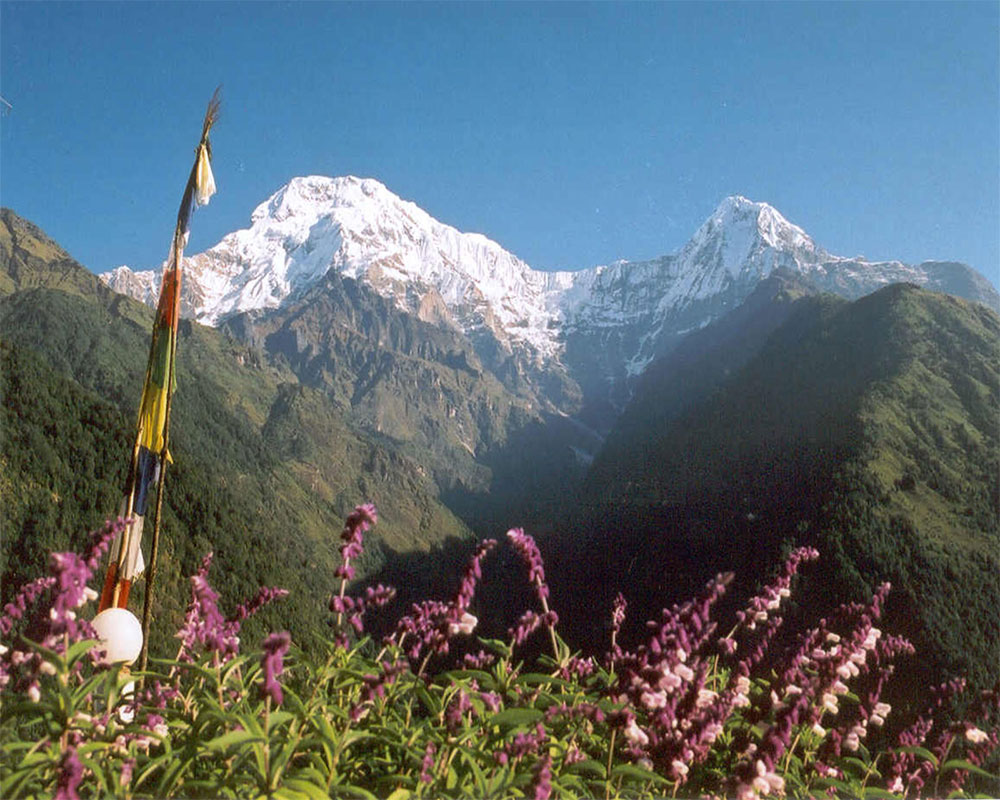
Trekking
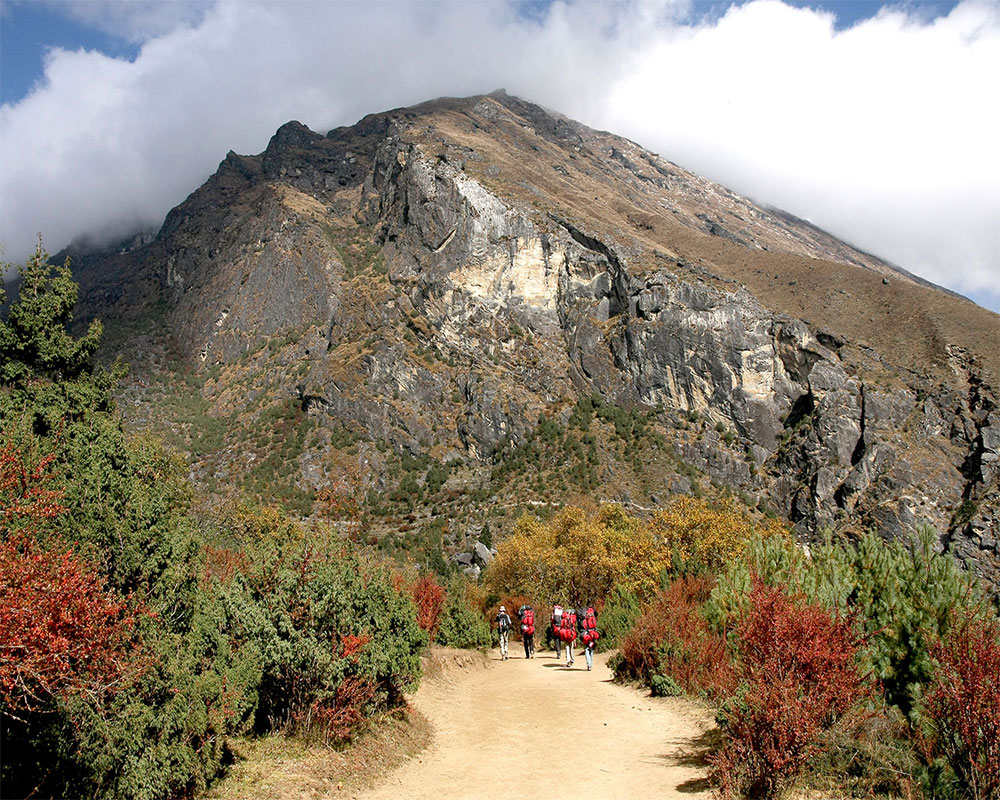
Trekking
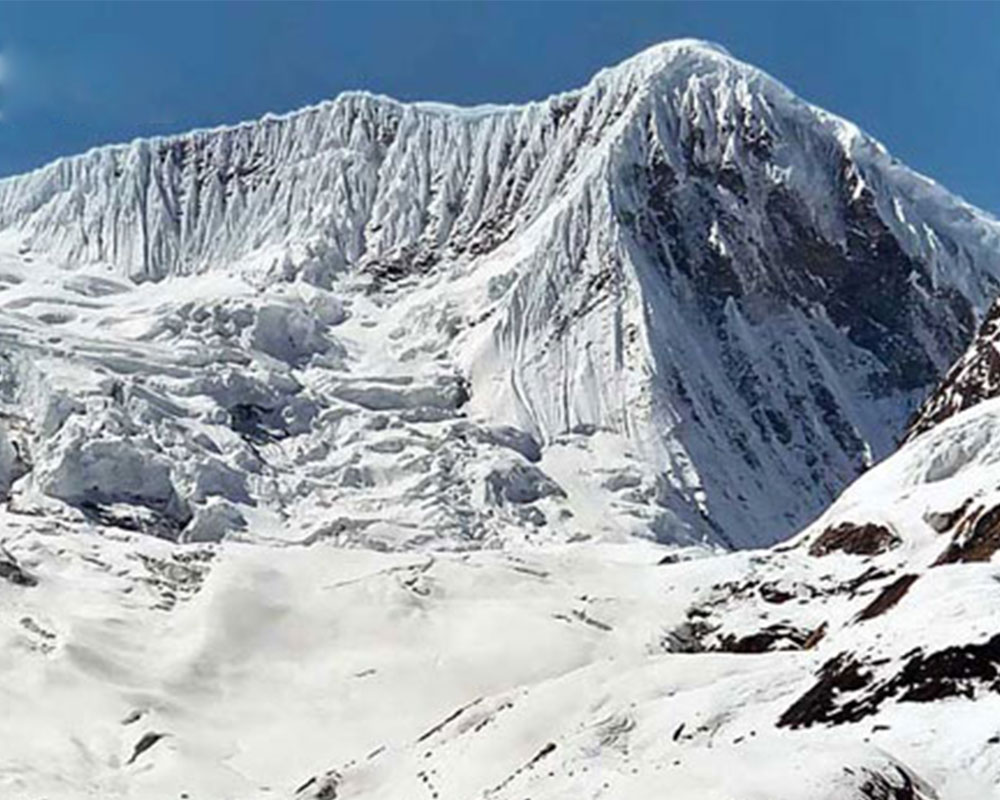
Trekking
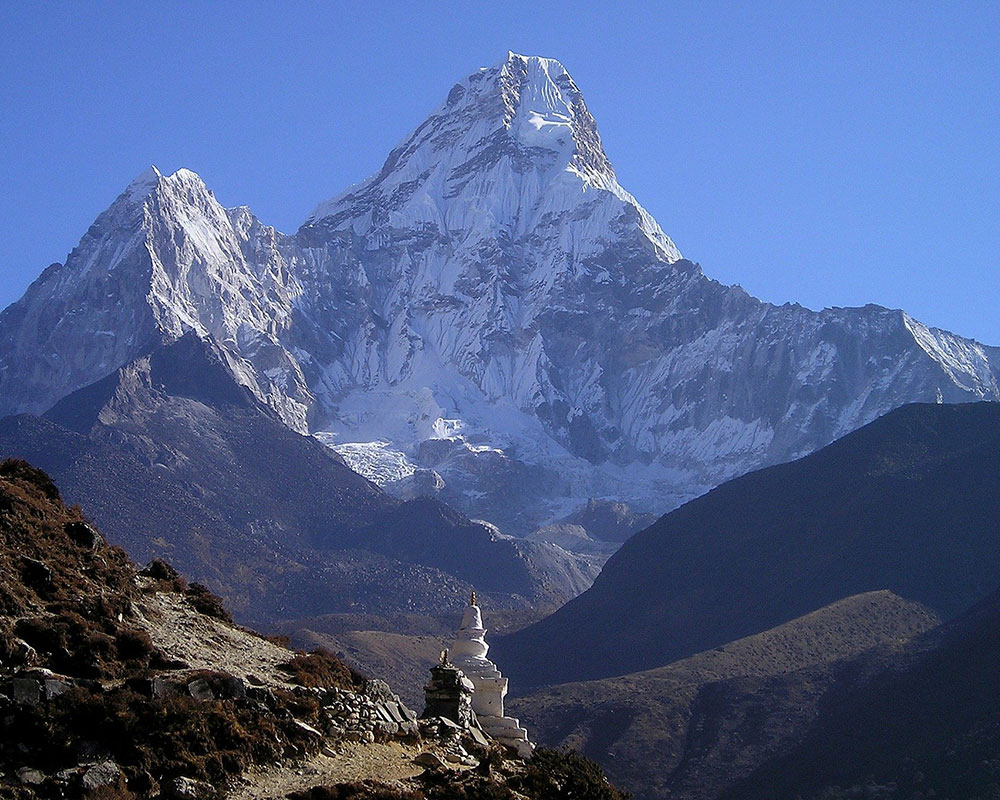
Trekking
Duration
16 Days
Altitude
3,864m
Difficulty
Easy
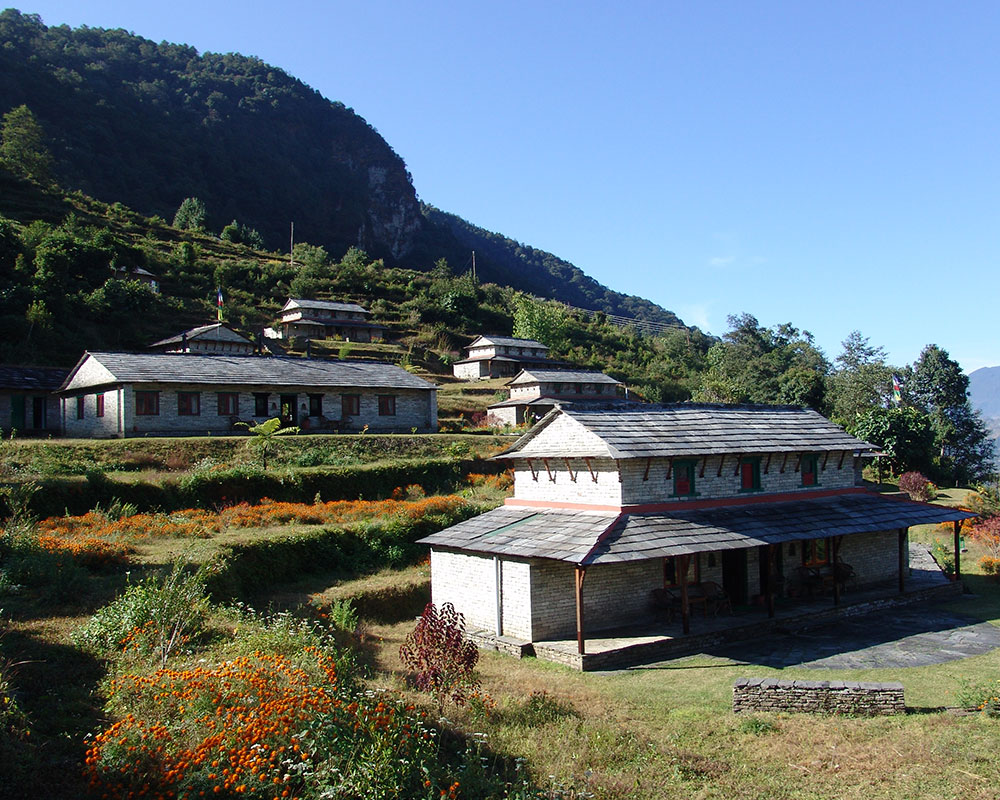
Trekking
Duration
11 Days
Altitude
2,012m
Difficulty
Easy
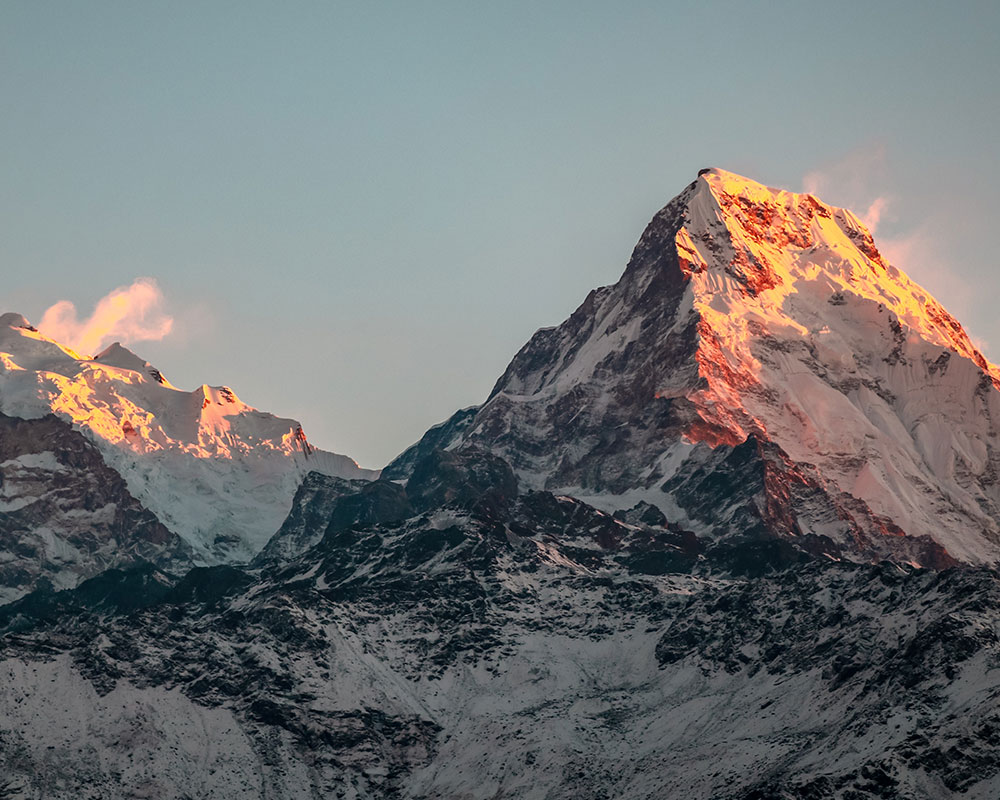
Trekking
Duration
13 Days
Altitude
4,130m
Difficulty
Easy

Website by Curves n’ Colors


